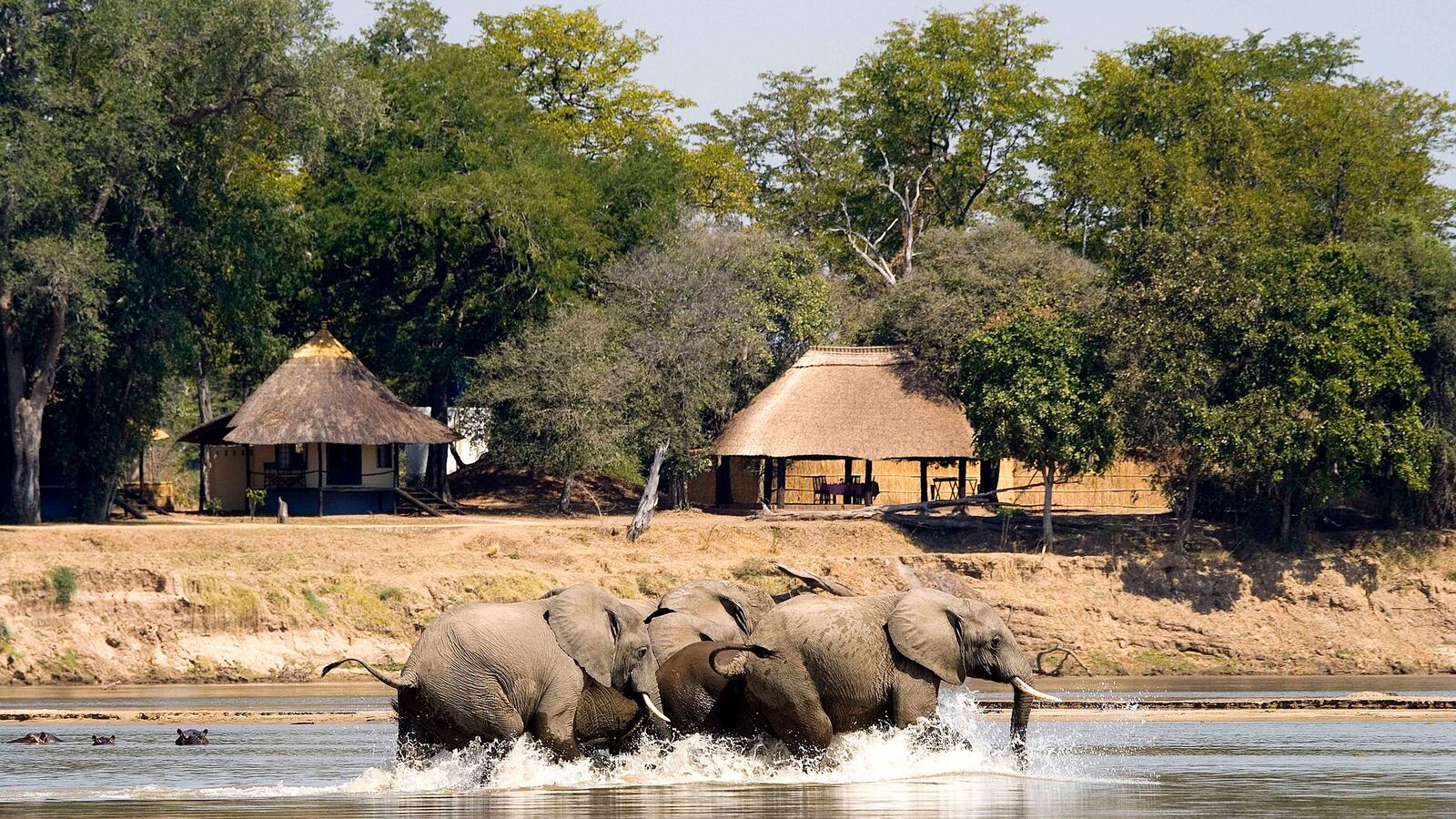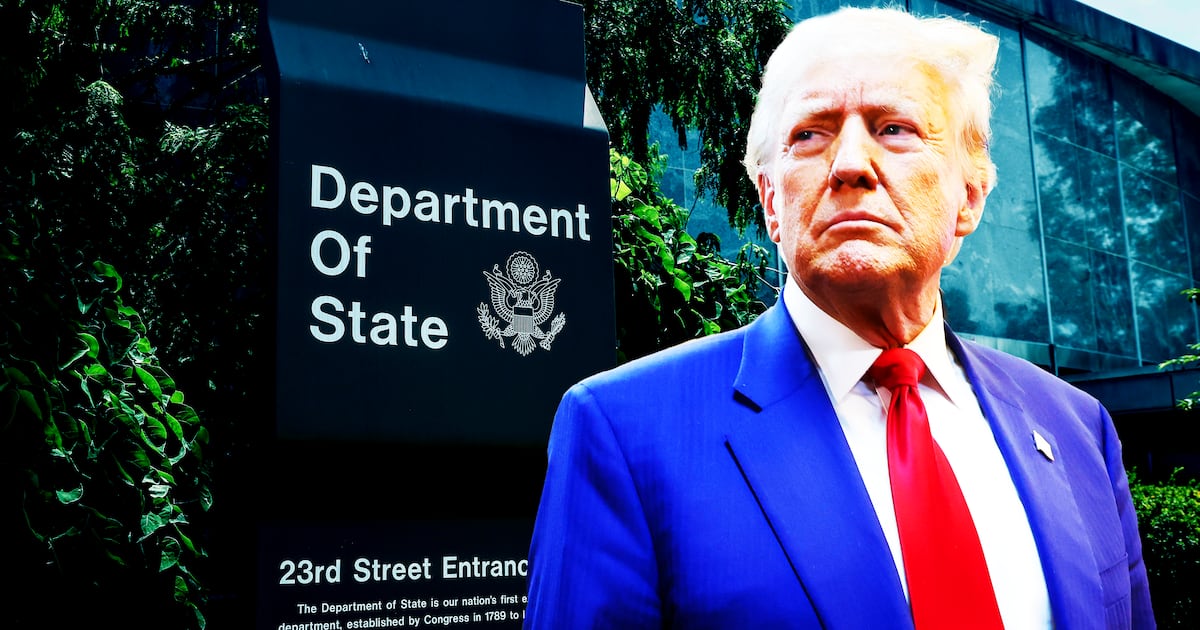Editor's Note: This is the latest installment in our series on underrated destinations, It's Still a Big World.
We were 10 minutes into the safari when Bertram, our guide with Robin Pope Safaris, knelt and scooped up a handful of glistening antelope feces. “Still warm,” he announced, the pellets sifting through his bare fingers as we looked on with equal parts horror and fascination. “Dung piles are a territorial marker. The alpha male can’t be far.”
Droppings, plants, paw prints, bugs—on a walking safari, you hone in on the little things, the tiny critters and hidden natural phenomena that you’d never notice on a traditional game drive. It was that promise of raw, unimpeded contact with the bush that lured me to South Luangwa National Park, a 3,500-square-mile swath of savanna that’s Africa’s prime destination for walking safaris (Norman Carr is said to have created the concept here in the ’50s).

Planning my trip, everyone thought I was nuts. “A walking safari? With lions and snakes and crocodiles around?” my boyfriend balked. “I’ll start making the funeral arrangements.” Even my dad, an established wildlife writer, urged me to conduct some risk-benefit analysis lest I wound up in a hippo’s digestive tract. But I’d done my research, and I wasn’t worried. Not only were walking safaris safe—with Robin Pope, each group is accompanied by a shotgun-carrying park ranger—to me, they seemed like the best way to get to know a landscape, dung piles and all.
Zambia’s safari offerings are often eclipsed by its neighbors’. Chances are you’ve heard of the Masai Mara, the Okavango River Delta, or the Serengeti, but most people couldn’t find Zambia on a map, let alone rattle off its top parks. For wildlife viewing, that lack of recognizability is a phenomenal advantage—and the main reason why you won’t run into any safari traffic jams (yes, they’re a thing) in South Luangwa. As far as I’m concerned, the fewer homo sapiens you see on safari, the better.

On the trail, the sun crept above the horizon to reveal a jet-black herd of African buffalo in the distance. As Bertram recalculated our route to give them a wide berth (buffalo can get ornery when caught off guard), we were distracted by two adolescent baboons tussling in a tree above. Somewhere behind us, a woodpecker was beat-boxing its way to breakfast. At our feet, an invisible chorus of cape turtle doves trilled their unbroken, waltzing song (coorrr-oo-coo, coorrr-oo-coo). I chuckled—peace and quiet? Not here. I’d been to music festivals that were less lit.
South Luangwa’s biodiversity and sheer plenitude of wildlife are its main draws. Four of the so-called “Big Five” species roam here—lions, elephants, buffalo, and leopards—and more than 400 bird species fill the sky including one of the largest stork colonies on earth. Leopards are shockingly prolific. Whereas in most parks you’d be lucky to spot one at all, here they’re so abundant (and relaxed) that you can see them taking leisurely strolls in broad daylight. On one night drive, we sat transfixed for 15 minutes watching a leopard in a tree devour a dead impala, blood trickling down its chomping maw. A pair of hyenas slunk below, praying for leftovers. A month later, I still can’t un-hear the macabre sound of teeth cracking bone.
As a safari newbie, I didn’t realize how lucky I was: Night drives are virtually unheard of in national parks—the pitch darkness of the bush makes it trickier for rangers to ward off any potentially dangerous animals, and most governments opt to play it safe. But night safaris are a fixture of South Luangwa and a boon to travelers, who would otherwise miss out on, well, half of the action. After all, porcupines, hyenas, mongooses, genets, civets, aardvarks, and the vast majority of big carnivores are nocturnal; if you’re lucky, you might spot a leopard on the hunt or something really rare, like a pangolin, the scaly, prehistoric-looking critter whose only defense mechanism is curling up into a ball.

The green flash of eyes in a ranger’s spotlight is always thrilling, but what stuck with me most from those night drives was the sky, bright and kinetic with roving satellites and shooting stars. As I zipped up my tent for the last time before heading to the airport, it struck me that my first safari wasn’t at all what I’d expected. Sure, we’d spotted more mammals, reptiles, and birds than I could count, but bragging rights and checklists were beside the point: I left South Luangwa with an inner calm that can only be attributed to a week spent in the middle of nowhere, immersed in nature, without so much as a nanobyte of internet. A good safari, I’d learned, wasn’t just a vacation. It was a mindset—a reminder to slow down; to open your eyes, nose, and ears; to listen; and to be still.
Planning Your Trip
First-time safari-goers to Zambia will have lots of questions ranging from how to pack to what medications to take to whether to self-drive or hire a private bush guide. That’s where A2A Safaris comes in—they tailor safari itineraries to each traveler’s needs and will happily hand-hold you every step of the way.
When to Go
The dry season, which runs from May to October, is optimal for wildlife viewing and minimal mosquito slapping. During these months, animals flock from far and wide to the Luangwa River basin, offering guaranteed sightings of hippos, crocodiles, impalas, pukus, and giraffes.

Where to Stay
To appreciate South Luangwa’s varied landscapes, you’ll want to move around a bit. Start your trip at Luangwa River Camp, a luxury lodge with spacious cabins, a shaded lounge, and a plunge pool, creature comforts you’ll crave after multiple flights and time-zone changes. Once acclimated, spend a couple of nights at Nsefu, a throw-back bush camp built in 1951 that takes a maximum of 12 guests at a time. You won’t find a better lodge for elephant viewing—herds cross the river nearly every morning while you’re sipping your coffee. Round out your week (or two) with some glamping at Tena Tena, whose city-apartment-size tents top my list for best places to nap on earth. The three properties are run by Robin Pope Safaris, one of the area’s best-established companies, in business since 1986; their rates include (surprisingly exceptional) meals, round-the-clock security, and guide services.






